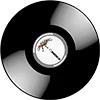
Chillwave — a style of electronic music with an atmosphere of nostalgia and retro sound. Genre history, key artists, characteristics, and influence on modern music.
In the world of electronic music, new genres regularly emerge — ones that not only create a fresh sound but also shape an entire atmosphere, mood, and image. One such phenomenon is Chillwave — a style that, since the late 2000s, has become a cult movement for an entire generation of listeners.
What is Chillwave?
Chillwave is a subgenre of electronic music that combines dreamy melodies, vintage synthesizers, expressive use of reverb, and samples reminiscent of the aesthetics of the 1980s and early 1990s. Its core mood is nostalgia and relaxation. That’s why many describe Chillwave as “a soundtrack for summer evenings, childhood memories, or daydreams.”
The music often sounds as if it’s being played through an old cassette tape or VHS — slightly blurred, soft, and tinged with retro romance.
History and Formation
The term “Chillwave” first appeared in blogs in the late 2000s, initially used almost ironically to describe “music for chilling.” However, the style quickly gained popularity — especially online — and evolved into an independent genre.
The main pioneers of Chillwave are considered to be:
-
Washed Out (the alias of Ernest Greene) — his track Feel It All Around became a true anthem of the genre;
-
Neon Indian (Alan Palomo), whose works introduced a bright, psychedelic sound;
-
Toro y Moi (Chaz Bundick), who blended chillwave with elements of funk and soul.
The genre’s peak came between 2009 and 2012. During this time, blogs, YouTube, and music platforms were filled with atmospheric tracks featuring vintage sounds and retro-styled cover art.
Sound Characteristics
You can recognize Chillwave from the very first seconds:
-
use of analog and lo-fi synthesizers;
-
soft vocal lines, often hidden behind layers of effects;
-
plenty of reverb and echo;
-
simple yet catchy beats;
-
samples reminiscent of old commercials, TV shows, or VHS recordings.
The music creates a sense of “slowed-down time,” as if the listener is drifting through a digital version of a warm summer dream.
Facts and Influence
-
Chillwave is closely tied to visual culture — album covers often feature vintage photography, VHS effects, and neon colors.
-
The style influenced the development of synthwave, vaporwave, and dream pop.
-
In the 2010s, Chillwave became a symbol of “internet nostalgia culture,” popularized on Tumblr and early music blogs.
-
Despite a decline in popularity by the mid-2010s, the genre left a lasting mark and continues to inspire new artists.
Chillwave Today
Today, the genre is experiencing a revival. Modern artists blend its elements with house, ambient, and indie pop, creating a cleaner and more refined sound. In an era where digital nostalgia and retro visuals are back in vogue, Chillwave is returning as the perfect backdrop for relaxation, meditation, or a cozy evening.
Chillwave is music for those who love to slow down, dream, and mentally revisit the past — even if it never quite existed the way the sound portrays it.

